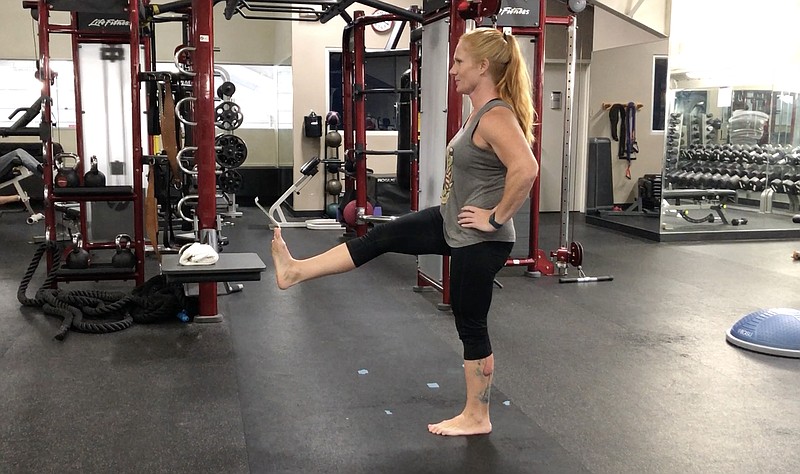Once in a while, I like to include "status check" exercises in a routine. These movements are goal-setting tools that provide instant feedback on progress made.
Exercise can sometimes feel like a never-ending battle that is neither won nor lost. Although this isn't technically wrong, it can be demotivating to view exercise in this light. That's why I like to set periodic, outcome-based goals within an exercise program so the individual has opportunities to celebrate a "win" every so often.
These little wins bolster self-confidence and encourage people to stick with the overall program over time.
Status check exercises are designed to provide such opportunities.
Pushups to failure are a good example of a status check exercise that is often used within a fitness assessment protocol. As the exerciser faithfully sticks with the program, progress is made, and the number of pushups it takes them to reach failure should, theoretically, increase (assuming upper body muscular endurance is a focus area). So, the total number of pushups serves as a status check — or benchmark — for the individual to measure progress.
The most effective exercise programs include such progress checkpoints every few months. They help to reinvigorate motivation and support sustained effort over time. This is well known.
But my status check exercises tend to be a little less traditional. Rather than focusing on standard fitness assessment measures like pushups, I prefer to customize movements that reflect the individual exerciser's goals.
For example, I've worked with clients who exercise solely to reduce stress and increase energy levels. So, we would plan periodic status checkups using short questionnaires about stress and energy. Once we gathered the information, we made exercise program adjustments accordingly. That's a great system that can be used for almost any kind of goal structure.
This week's exercise is, of course, a status check. This one helps to evaluate hamstring flexibility, balance and hip flexor strength. It's a cool status check for those who enjoy mind-body training modalities such as yoga, Pilates or barre.
[Video not showing up above? Click here to watch » arkansasonline.com/1011kick/]
1. Stand with your feet shoulder width apart and your hands on your hips.
2. Lift your left knee up until your left thigh is parallel with the ground.
3. Extend the left leg completely straight out from the hip.
4. Try to hold this "front kick" position for 5-10 seconds without allowing the leg to lower.
5. Switch legs and repeat.
This status check is a great way to evaluate so many things, but specifically balance and muscular control in the hips. Gymnasts would be the gold standard for this kind of status check movement, and you might not be able to extend your leg high and straight or hold it as long as a gymnast would. Set reasonable goals that match your fitness level.
Now it's time to get to work!
Matt Parrott is glad to hear from readers. Send him questions or share a story about your pandemic workouts at
vballtop@aol.com
